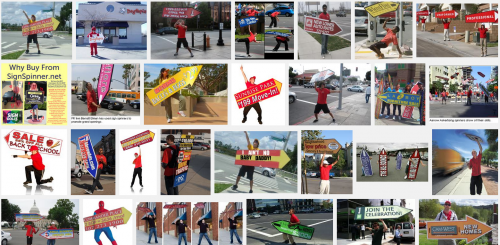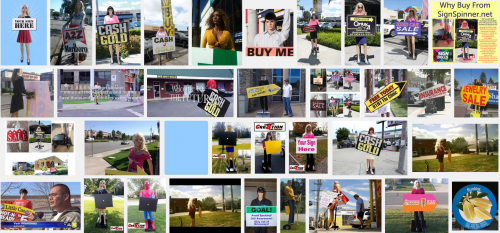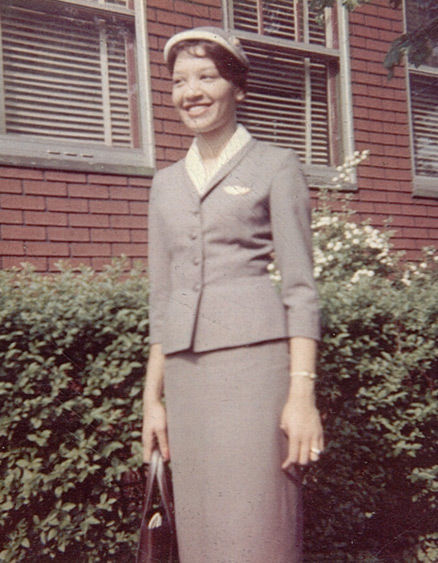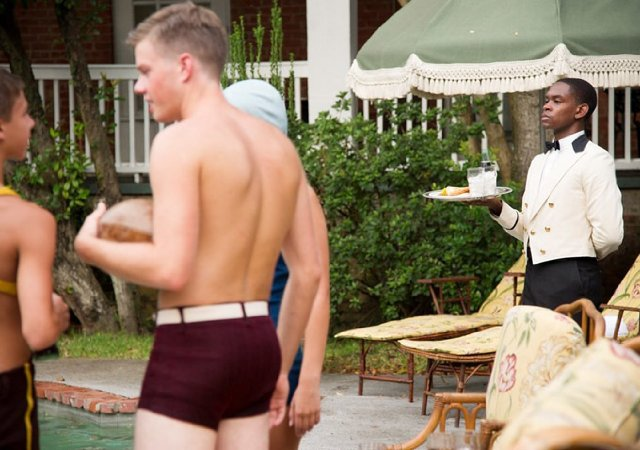In the midst of the recession a new occupation emerged: the sign spinner. These individuals stood on sidewalks outside of businesses, dancing with signs or arrows that they threw and twisted in the air and around their bodies. Some of them were pretty cool, actually.
Yesterday NPR discussed the replacement of some of these spinners with mannequins. Robots that are programmed to spin the sign. Of course, they aren’t nearly as good as a halfway decent human sign spinner. But, it was argued, they’re getting the job done.
From human to machine, then. But no one commented on the bizarre race- and sex-change that accompanied this shift. In my part of the country, most human sign spinners are black or Latino men. I suspect that’s true wherever there’s a substantial non-white, non-Asian population. But the mannequins appear to be overwhelming white women.
The Google image search for each somewhat supports this narrative. The mannequins are overly white women and the humans are almost all men and, arguably, disproportionately men of color.
Google search for “sign spinners” (click to enlarge):
Google search for “‘mannequin sign spinners” (click to enlarge):
Isn’t. This. Interesting.
When the business owner or manager can make choices about what race and gender they prefer, they choose white females. Presumably because “sex sells,” the female body (in a bikini) is the universal symbol for sex, and white women are the most valuable commodity in that market.
When we’re hiring low wage human workers, however, business owners and managers have less control over the race and gender composition of their workforce. It appears most would prefer to hire white women in bikinis for everything but, because of institutionalized racism and the sex segregation of occupations, they get men and, perhaps, men of color.
How amazing that something so simple — the evolution of the sign spinner — can tell us so much about who we value and why.
Here’s a commercial for the new robotic sign spinners, to drive the point home:
Cross-posted at Racialicious and Pacific Standard.
Lisa Wade, PhD is an Associate Professor at Tulane University. She is the author of American Hookup, a book about college sexual culture; a textbook about gender; and a forthcoming introductory text: Terrible Magnificent Sociology. You can follow her on Twitter and Instagram.













